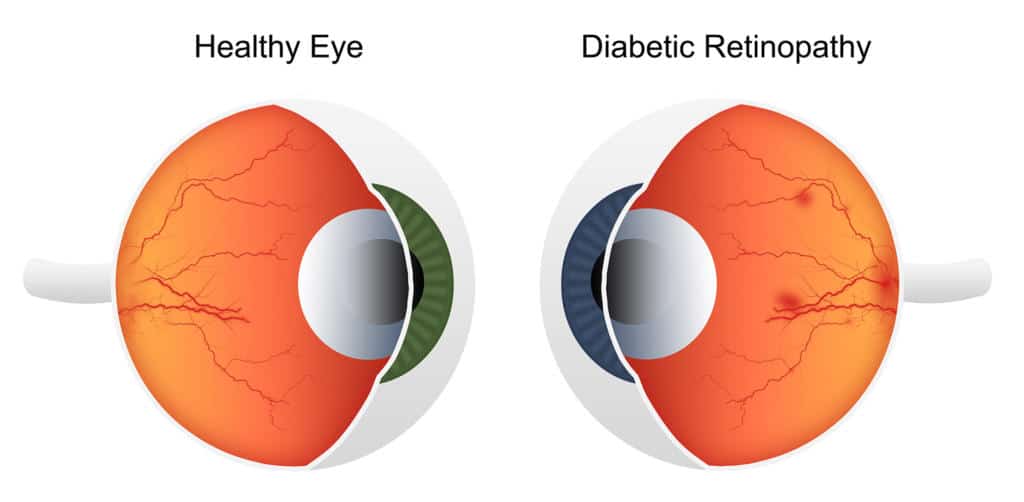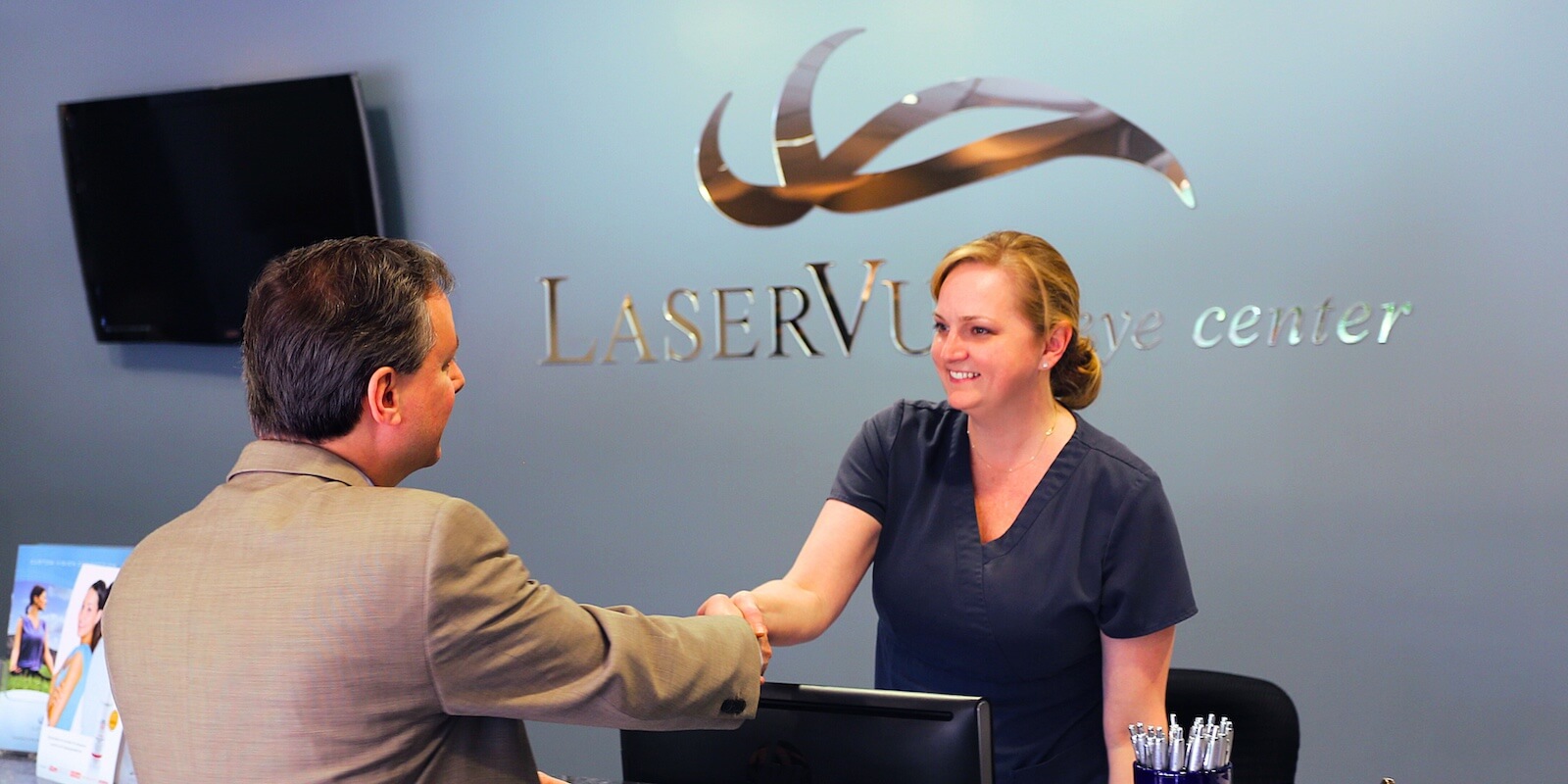
What is Diabetic Retinopathy?
The longer you’ve had diabetes, the higher your risk of developing this condition. Both types of diabetics are at risk. The good news is that most cases can be prevented with early detection and treatment. That’s why it’s especially important to have a comprehensive eye exam at least once a year.
What causes diabetic retinopathy? When blood sugar is poorly controlled, blood vessels in the retina may leak fluid or blood and leave deposits there. This in turn causes swelling. In some people, however, it’s caused by the growth of abnormal new blood vessels on the retina’s surface.
Stages
Early Stages
Background Diabetic Retinopathy (BDR) is an early stage, more like a warning sign. It indicates that serious damage to the eye may be starting. BDR can occur at any time after the onset of diabetes. It often has no visual symptoms, but is usually caught in routine eye exams. Generally, patients at this stage are closely monitored.
The condition may advance to pre-proliferative diabetic retinopathy. At this point, the retina swells. The leaking blood vessels must be sealed by performing a laser photocoagulation on the retina.
Advanced Stages
Proliferative Diabetic Retinopathy (PDR) happens when fragile, abnormal blood vessels grow along the surface of the retina and across the vitreous (the clear jelly inside the eye). Should they break or even leak, severe vision loss or blindness can occur. Alternatively, fluid may leak into the center of the macula. The macula is the part of the eye that allows you to see sharp images straight ahead. Patients with PDR should receive scatter laser photocoagulation (aka pan-retinal laser photocoagulation) to seal the vessels as soon as possible after diagnosis.
Avoiding Blindness
Left too long without treatment, the vessels can bleed into the vitreous. This may also cause the retina to detach, potentially causing blindness. In either case, you will need a vitrectomy. This is an operation to remove the hemorrhage, as well as the broken blood vessels. It’s important to remember that not all diabetics will lose their vision. You can reduce or eliminate risks by controlling your blood sugar and blood pressure. This can be accomplished by eating right, getting regular exercise, and having your eyes examined at least once a year.
Treating Diabetic Retinopathy at LaserVue
If you are diagnosed with diabetic retinopathy, don’t put off treatment. Early detection and early treatment will save your sight. Want more information? Interested in scheduling an appointment with with our San Francisco Bay area eye doctors? Contact us or give us a call at 1-800-527-3745.

